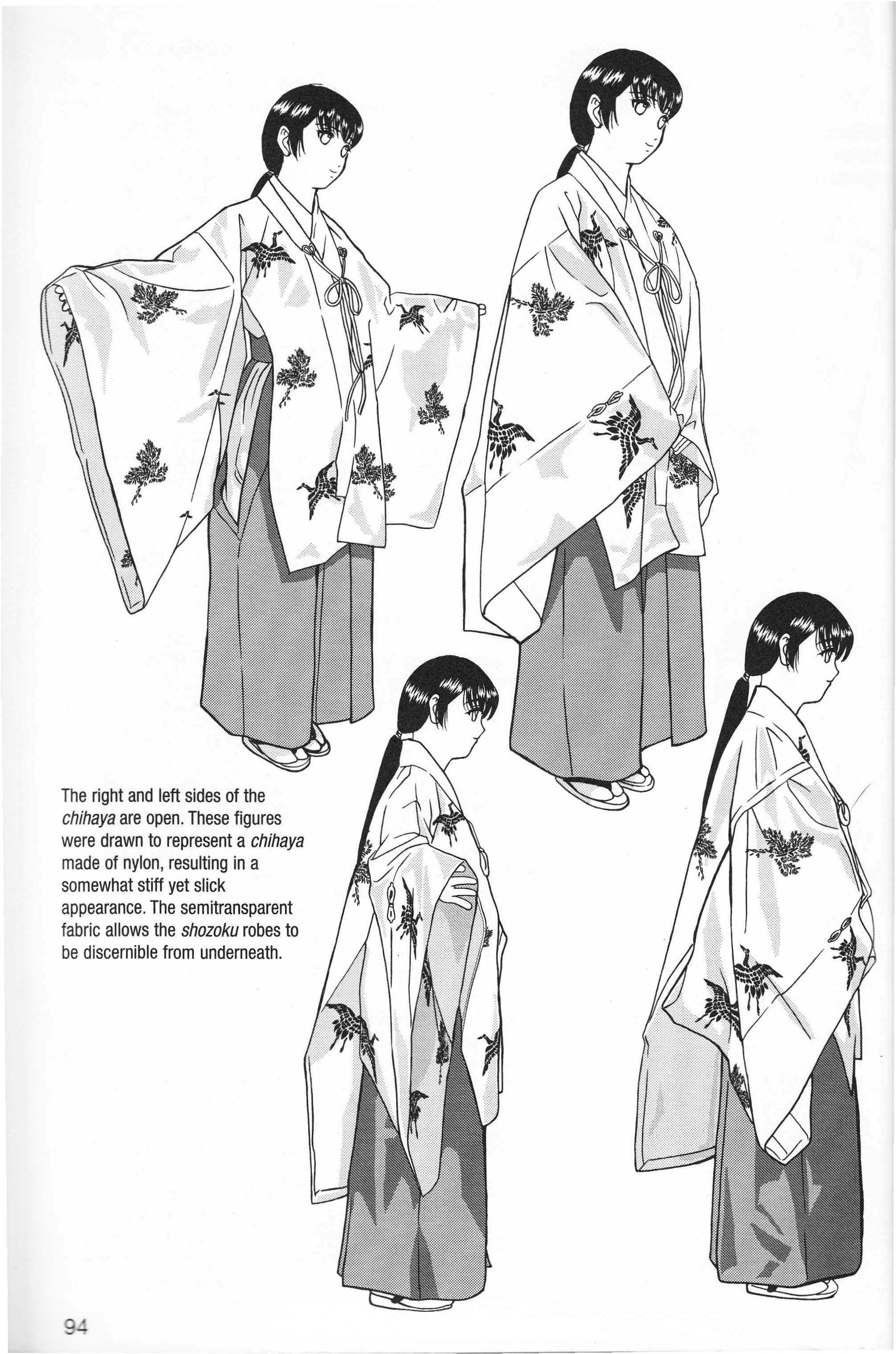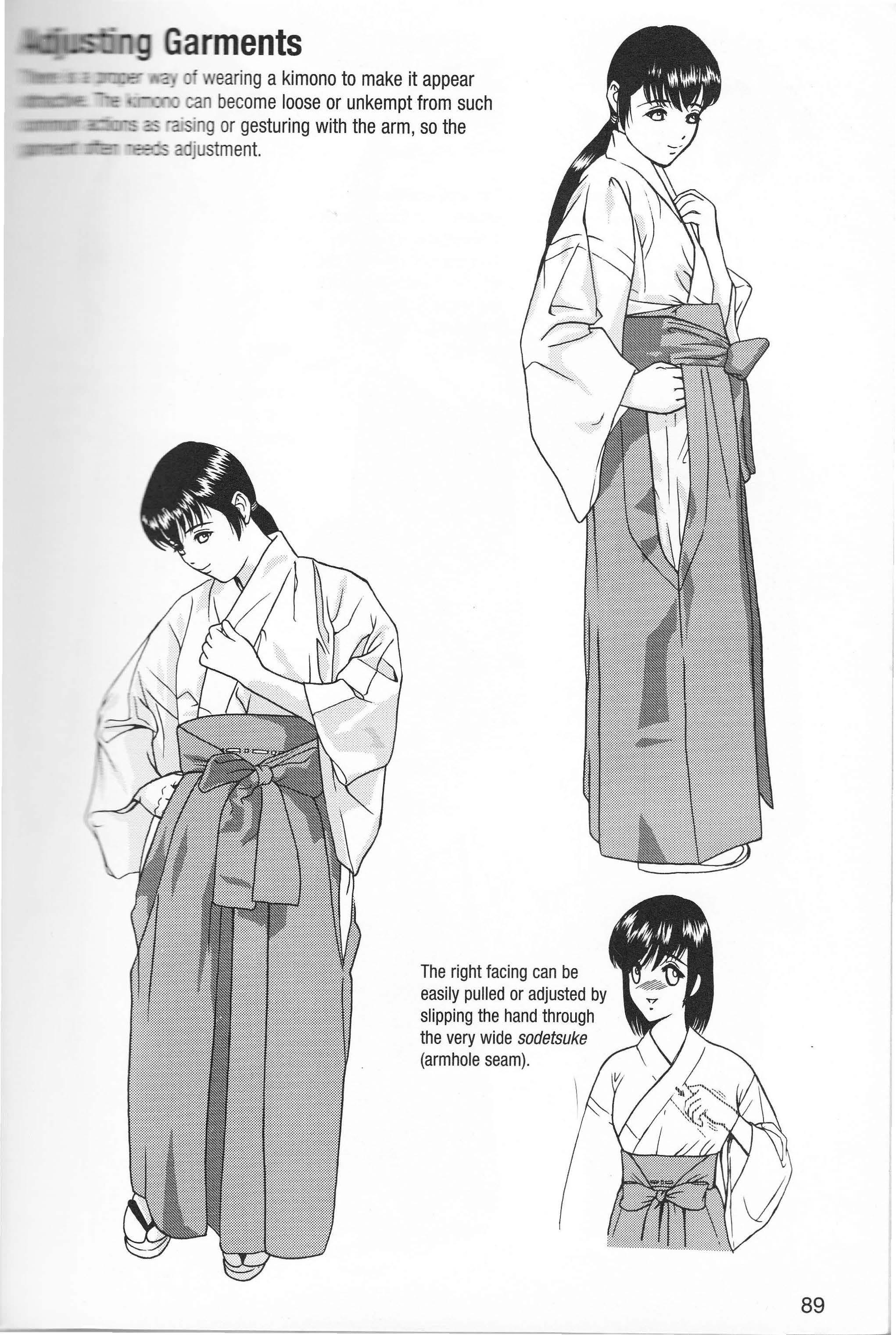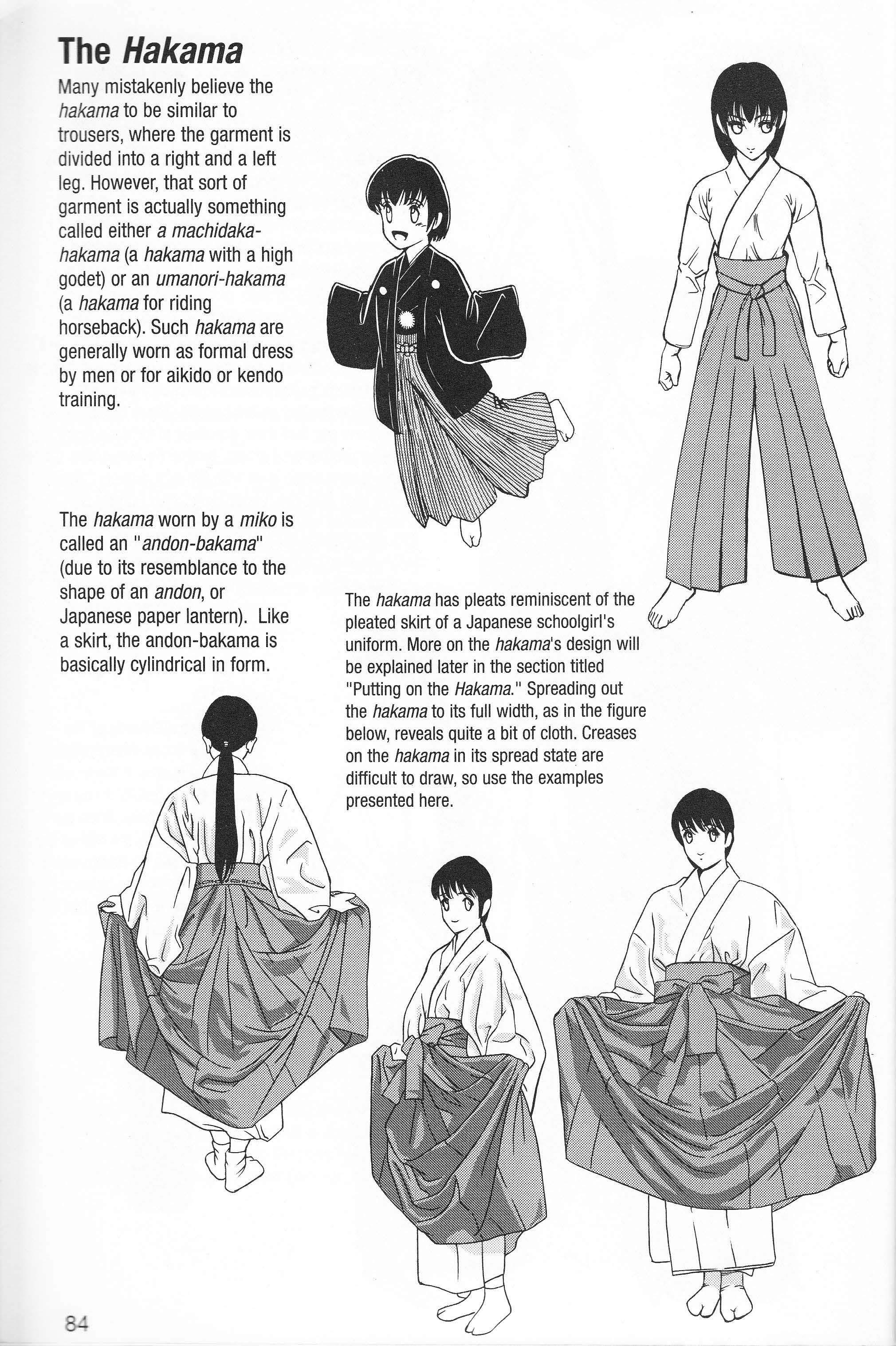
3 minute read
More About Adjusting Garments
by Charlie San
urt Adjusting Garments
en worn over an :" , lt begins to be fixed by the obi.
,....._._.... - -;:-;:. ri (hanging portion L - eeve) is open, :m:E:OE _ -::: esign as woman's , arsely, the pocket of on a man's kimono. ... This shadow results from the dangling sleeve.
The Chihaya
The chihaya is an outer robe worn by miko when performing a traditional dance at a festival or other ceremony. The garment presented in this book is a simplified version. Chihaya come in two general styles: pure white and patterned.
Openings tend to be included in the shoulders of chihaya in manga and anime; however, such openings are actually found in kariginu (traditional hunting dress) or suikan (man's outer robe).
The kariginu was part of the ordinary dress of Japanese nobility during the Heian Period (794-1185). Beginning in the Kamakura Period (1186-1333), the kariginu became an article of formal wear for both nobles and members of the samurai class. Today, the garment is worn primarily by Shinto priests. The suikan was part of the everyday clothing worn by courtiers and dignitaries and the formal dress of juvenile nobles who had not yet undergone their coming-of-age ceremony. In the Kamakura Period, the suikan was transformed into the formal attire of the samurai.
The illustration to the left shows a shirabyoshi (female dancer in male attire) wearing an eboshi (formal headwear of courtiers) and suikan. The word shirabyoshi originally referred to traditional musical performances that were popular during the late Heian Period. However, the word also refers to a female dancer dressed in men's clothing. There have been accounts of miko who for some reason lost their divine or priestess abilities, causing them to leave the shrine a earn money performing in the arts.
The roles of these former miko spanned the spectrum of entertainment. Some were even said to have prostituted themselves. Others, however, remained virtuous, including Shizukagozen (a famed miko who lived during the late Heian and early Kamakura periods), despite the fact that she had become the concubine of Japanese military leader and tragic hero Minamoto Yoshitsune.

Those shirabyoshi who succumbed to prostitution were believed to have lost their spiritual powers along with their virginity, and therefore unable to resume their former positions as miko. However, depending on the miko's lineage, some were believed to retain their powers even after having given birth and and were said to have received from or passed along powers to their offspring. Therefore, shirabyoshi and miko can be considered closely linked occupations.
This figure is dressed as a kannushi (Shinto priest or shrine guardian) and wearing kariginu. The occupation of kannushi be held by both men and women. Although the kannushi is different from the miko, the kariginu is still acceptable dress a female character.
:-E
e arm When drawing Japanese clothing, avoid adding dark shadows. If shading is to be included, keep it light.
Both feet should be in shadow. However, in key manga panels or illustrations, think about how lighting might fall on the feet, depending on their positions, and shade appropriately. (Note the arrow in the illustration to the right.)

The chihaya featured on this page are adorned with these two patterns.
The right and left sides of the chihaya are open. These figures were drawn to represent a chihaya made of nylon, resulting in a somewhat stiff yet slick appearance. The semitransparent fabric allows the shozoku robes to be discernible from underneath.

The ripples and folds appearing around the shoulder are created when the fabric is draped over something round. Although they primarily fall straight down , there are some that cascade at an angle around the arm, which will need to be represented in gentle curves, depending on the position of the ripple. Be aware of the placement when drawing such folds and ripples. 95











